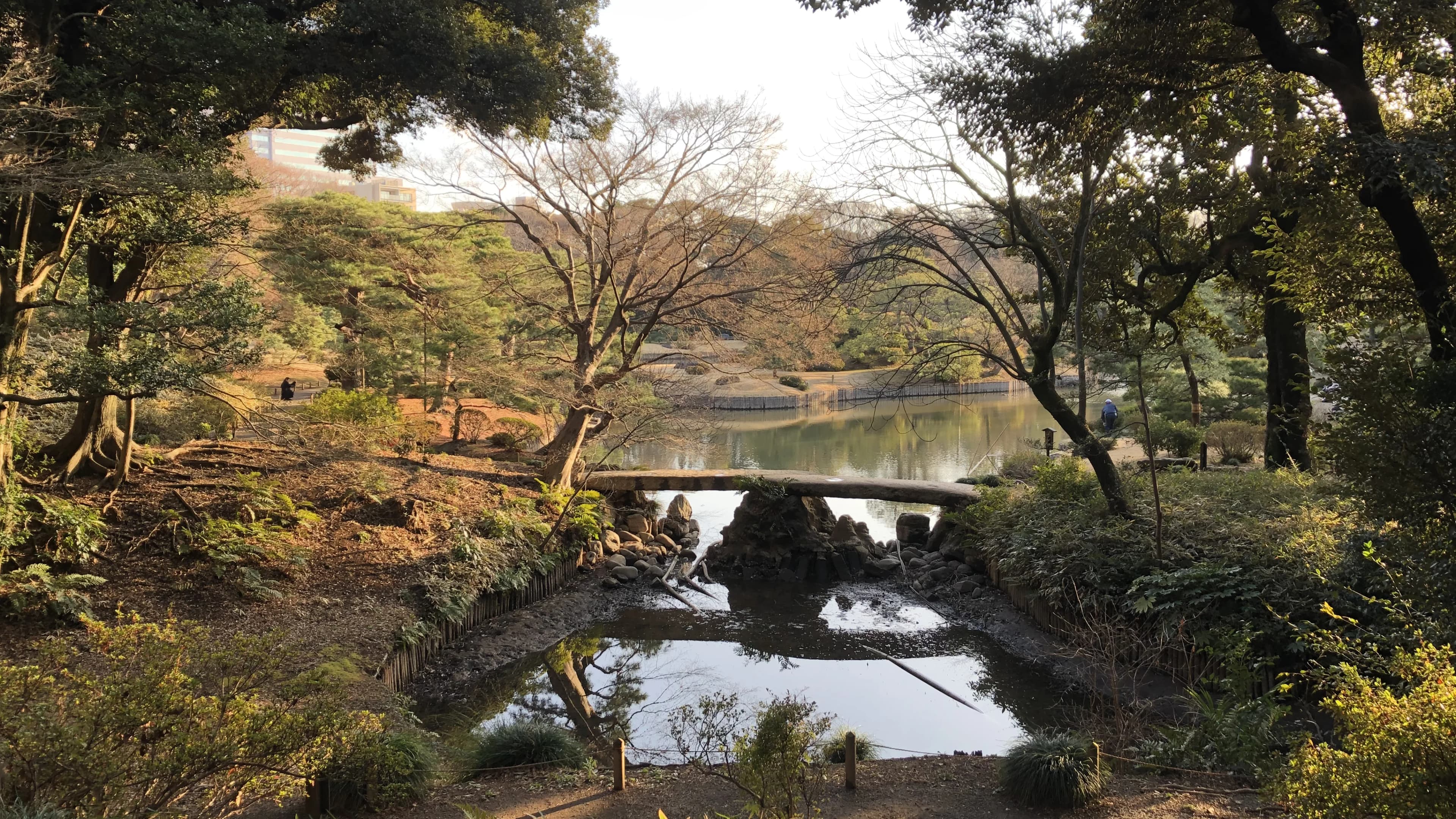
Rikugien Garden
六義園- Komagome StationNamboku LineYamanote Line
- Walk 5 minutes
Rikugien Garden is one of Tokyo’s most beautiful and historically significant Japanese gardens. Alongside Koishikawa Korakuen, it is celebrated as one of the two great daimyo gardens of the Edo period.
Rikugien was created in 1695, when Tokugawa Tsunayoshi, the fifth shogun, granted the Komagome estate to his trusted retainer Yanagisawa Yoshiyasu. Yoshiyasu personally designed and oversaw the construction of the garden, transforming a flat Musashino plain into a vast landscape of hills, ponds, and streams over seven years.
The garden was built as a “kaiyū-shiki tsukiyama-sensui teien” — a strolling-style landscape garden featuring artificial hills and a central pond. It reflects Yoshiyasu’s deep literary appreciation, embodying themes from classical waka poetry.
The name “Rikugien” (六義園) means “Garden of the Six Principles”, derived from the Six Forms of Waka Poetry (風・賦・比・興・雅・頌), which originated from the Six Principles of Chinese Poetry in the ancient anthology Mao Shi. Throughout the garden, 88 scenic spots recreate famous landscapes celebrated in Japanese poetry — especially the coastal beauty of Wakanoura in Wakayama Prefecture, as well as other poetic and historical scenes.
In the Meiji period, the garden became the private villa of Iwasaki Yatarō, the founder of Mitsubishi. Later, in 1938, it was donated to the Tokyo Metropolitan Government and opened to the public. On March 31, 1953, Rikugien was officially designated a Special Place of Scenic Beauty (Tokubetsu Meishō) by the Japanese government.
Today, the garden spans approximately 87,809 square meters and continues to preserve its Edo-period elegance, with ponds, stone bridges, forested hills, and teahouses.
Visitors can enjoy seasonal beauty year-round, including pines, maples, and zelkovas that define the garden’s structure; cherry blossoms (including weeping varieties) in spring; azaleas and hydrangeas in early summer; and brilliant red maples in autumn.
The garden’s main facilities include the Shinsentei meeting hall and the Gishuntei teahouse, both ideal spots for resting while taking in the tranquil scenery.
Tsutsuji-chaya (“Azalea Teahouse”) stands gracefully among maples and azaleas, its rustic thatched roof blending harmoniously with the surrounding hills. Built during the Edo period, it embodies the refined aesthetics of a mountain retreat — a place once used for quiet tea gatherings and poetic reflection.
Nearby, Takimi-chaya (“Waterfall Teahouse”) overlooks a small cascade and pond. The gentle sound of flowing water creates a serene atmosphere, allowing visitors to experience the essence of shizen no bi — the beauty found in nature’s simplicity.
Free guided tours are offered in Japanese every Saturday, Sunday, and national holiday at 11:00 a.m. and 2:00 p.m. English-language tours are available on the first and third Sundays at the same times. Please note that tours are not conducted in July and August.
At Hey Japan!, we strive to keep the places listed on our website as current as possible. However, it is important to note that location owners or management may make changes to their plans, including canceling events, altering opening times, or modifying admission requirements, without prior notice. To ensure that you have the most accurate information, we recommend checking official websites before visiting any location.
Last Updated:












